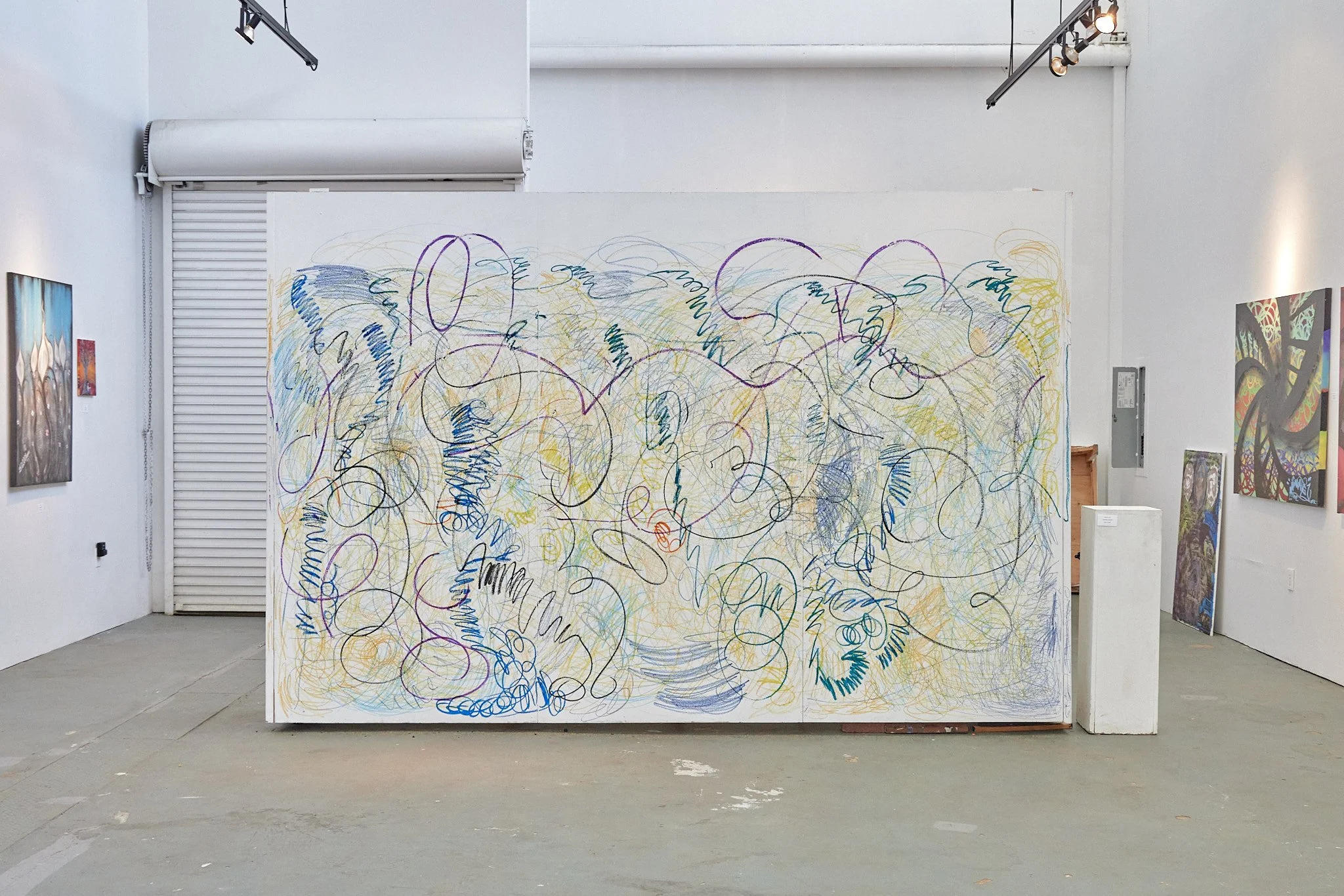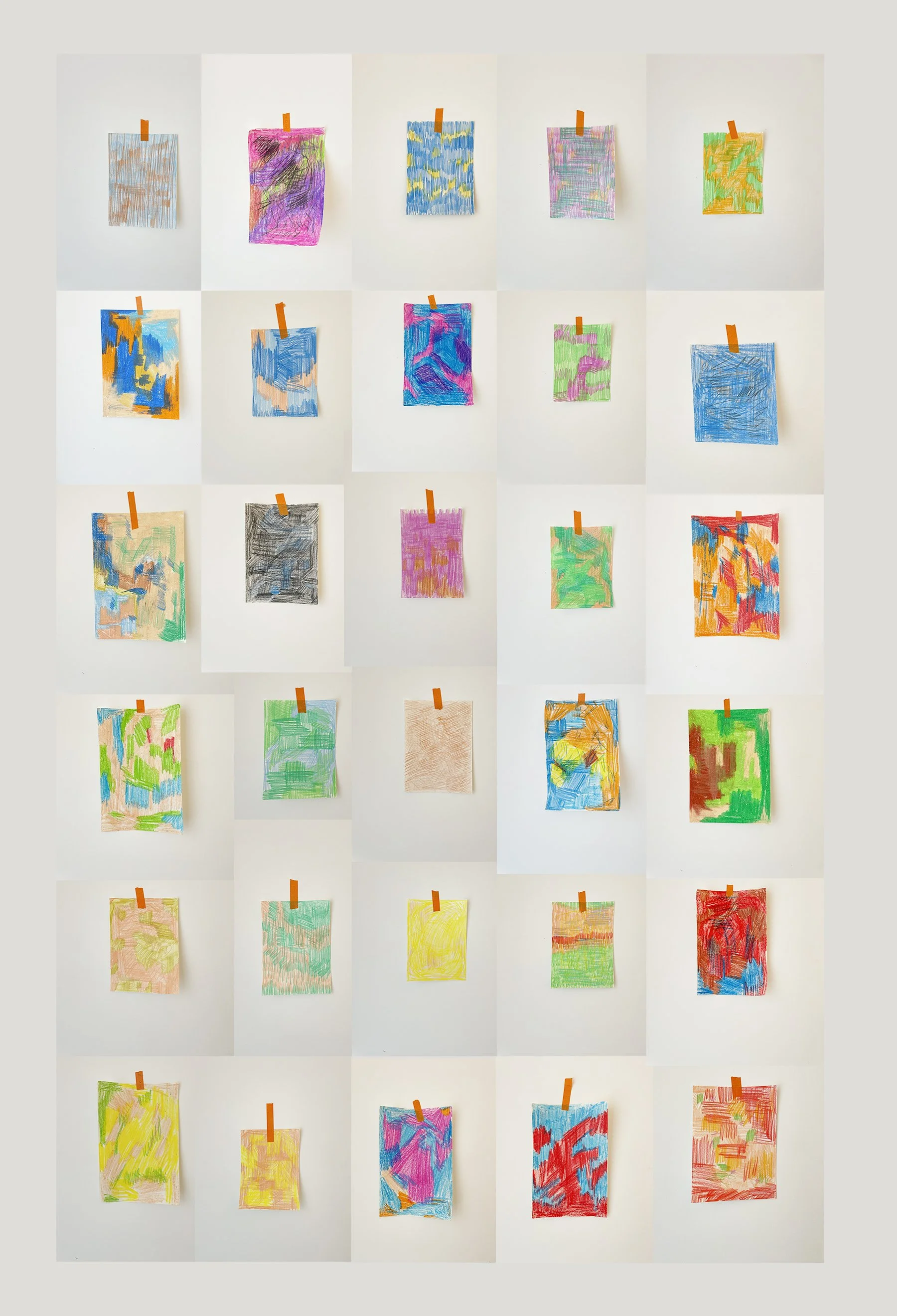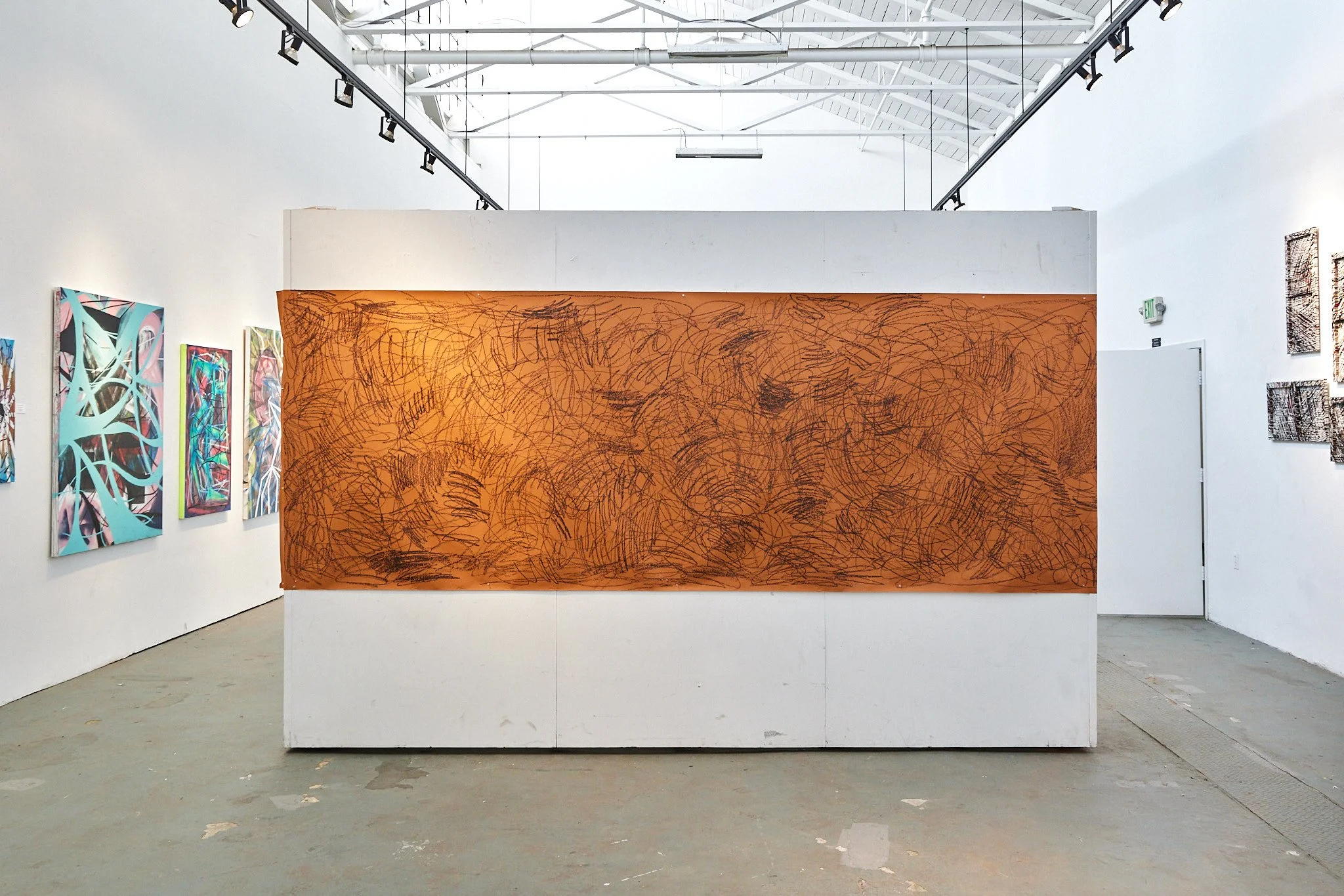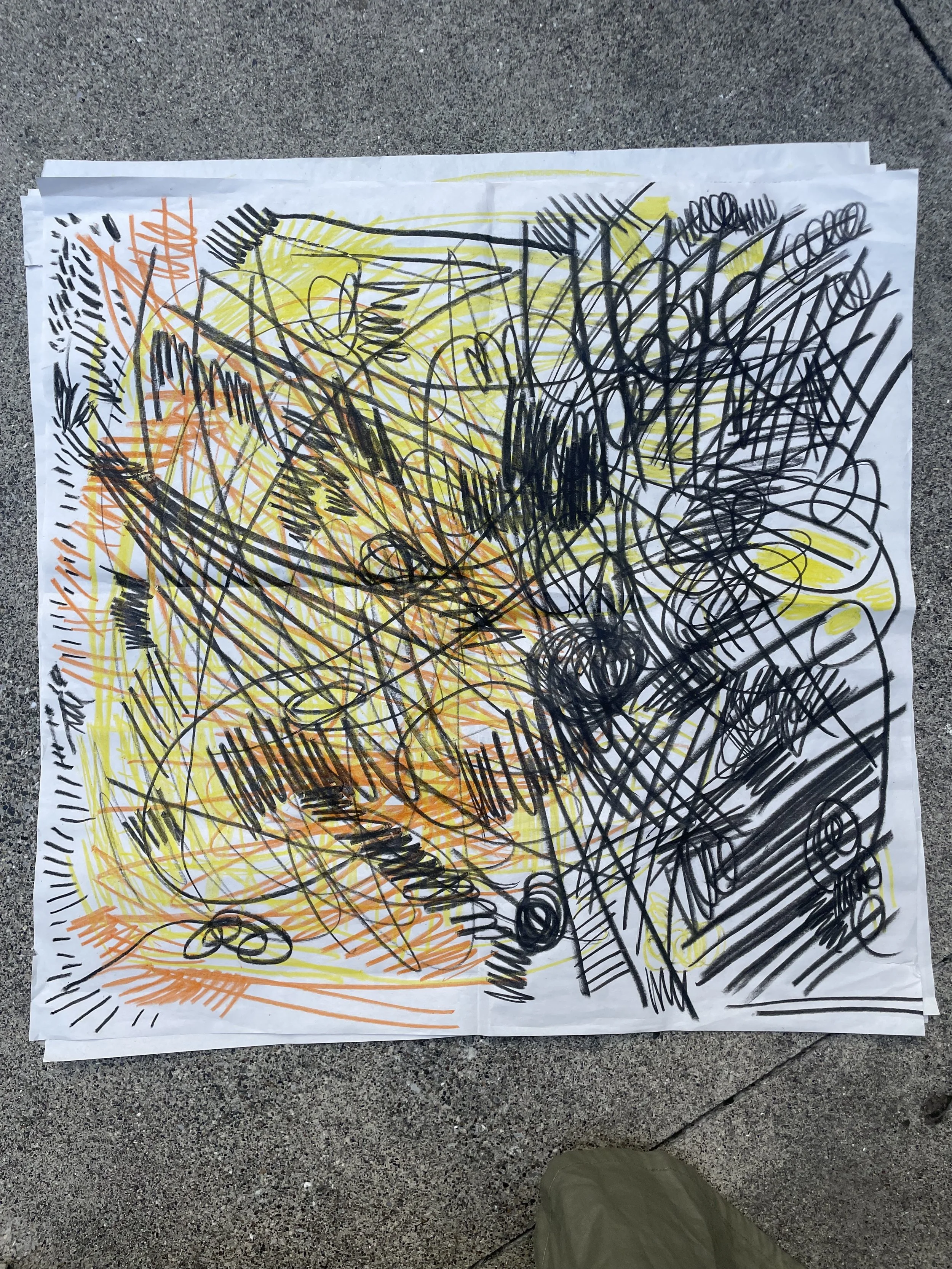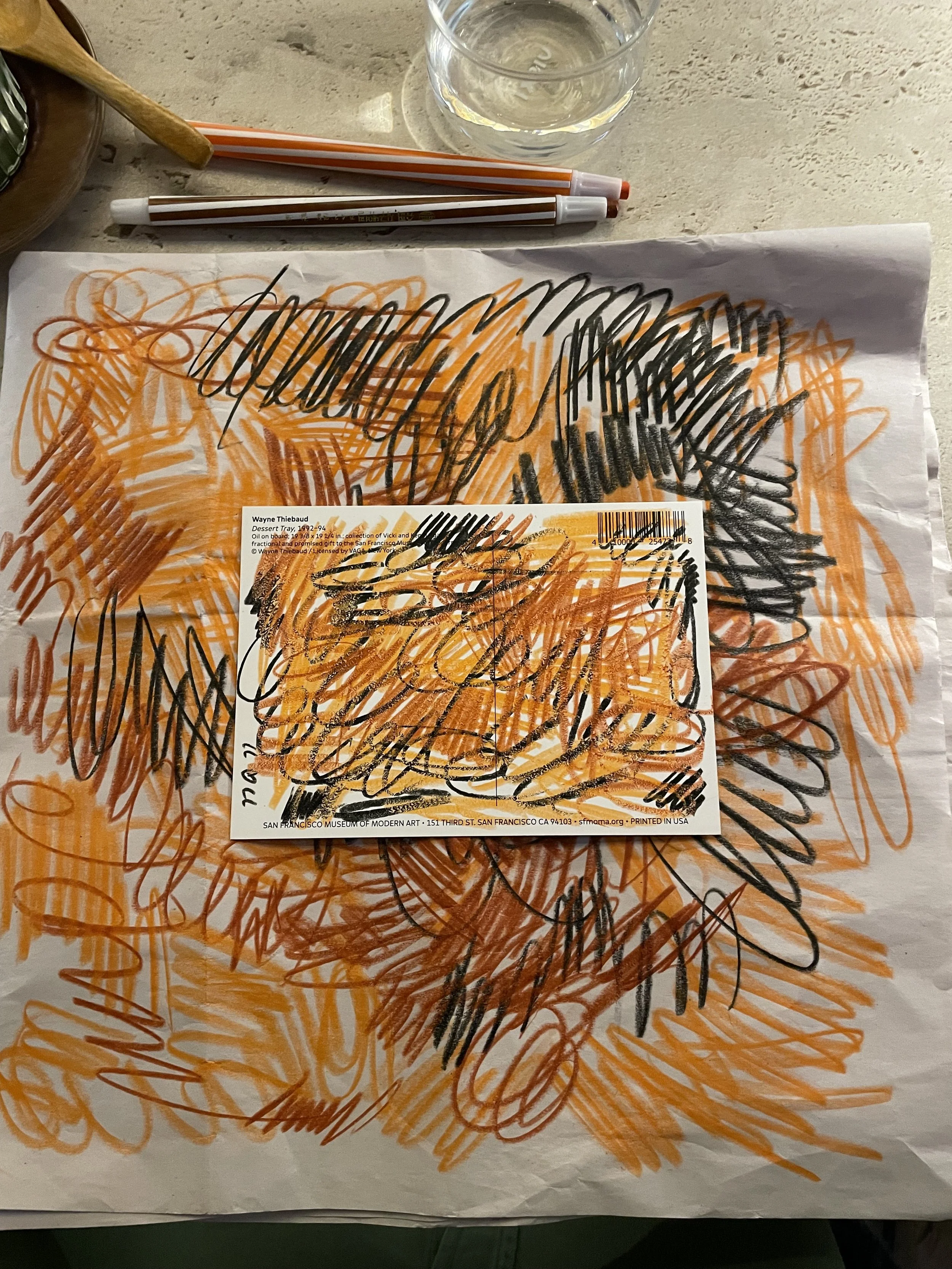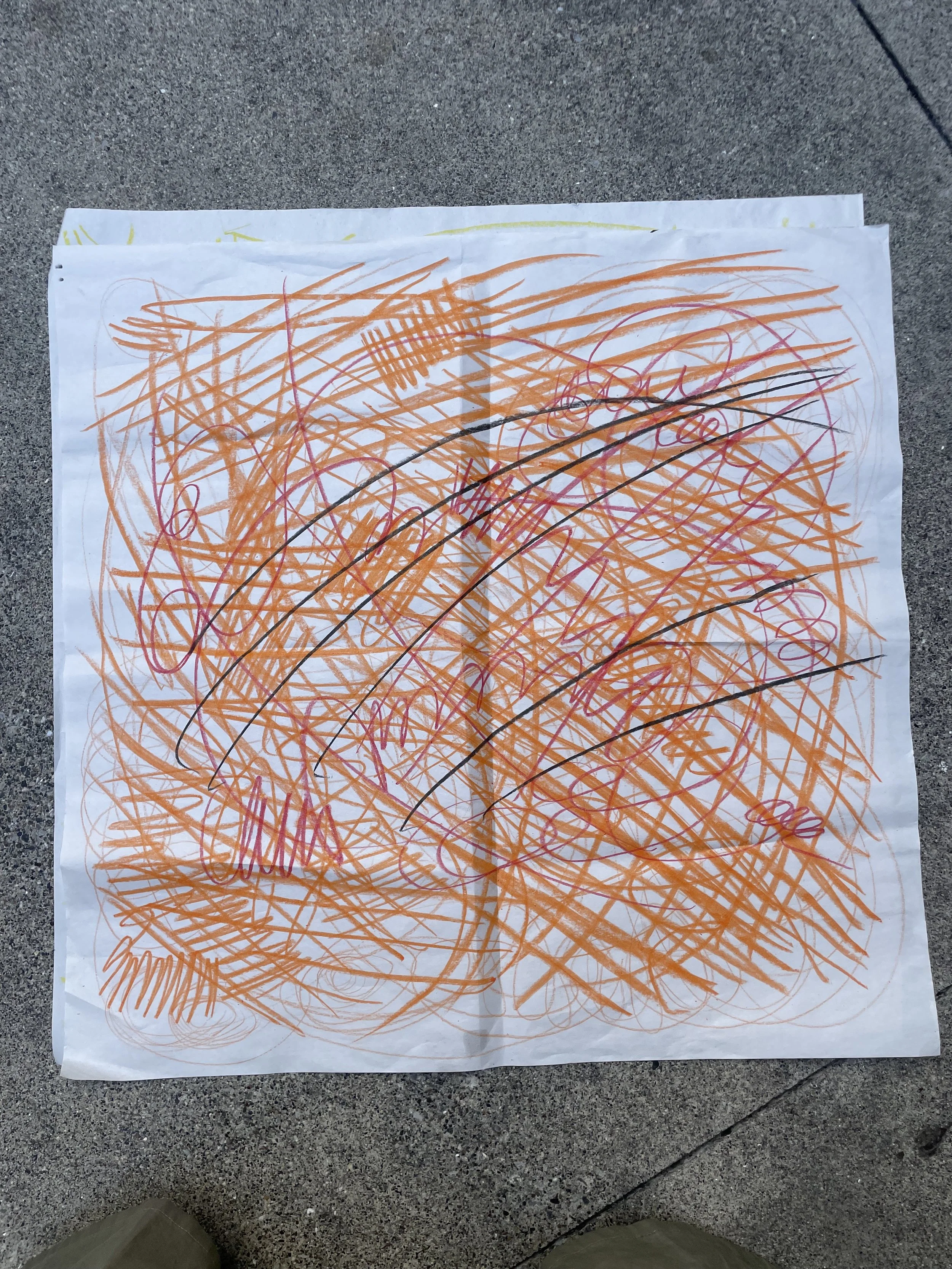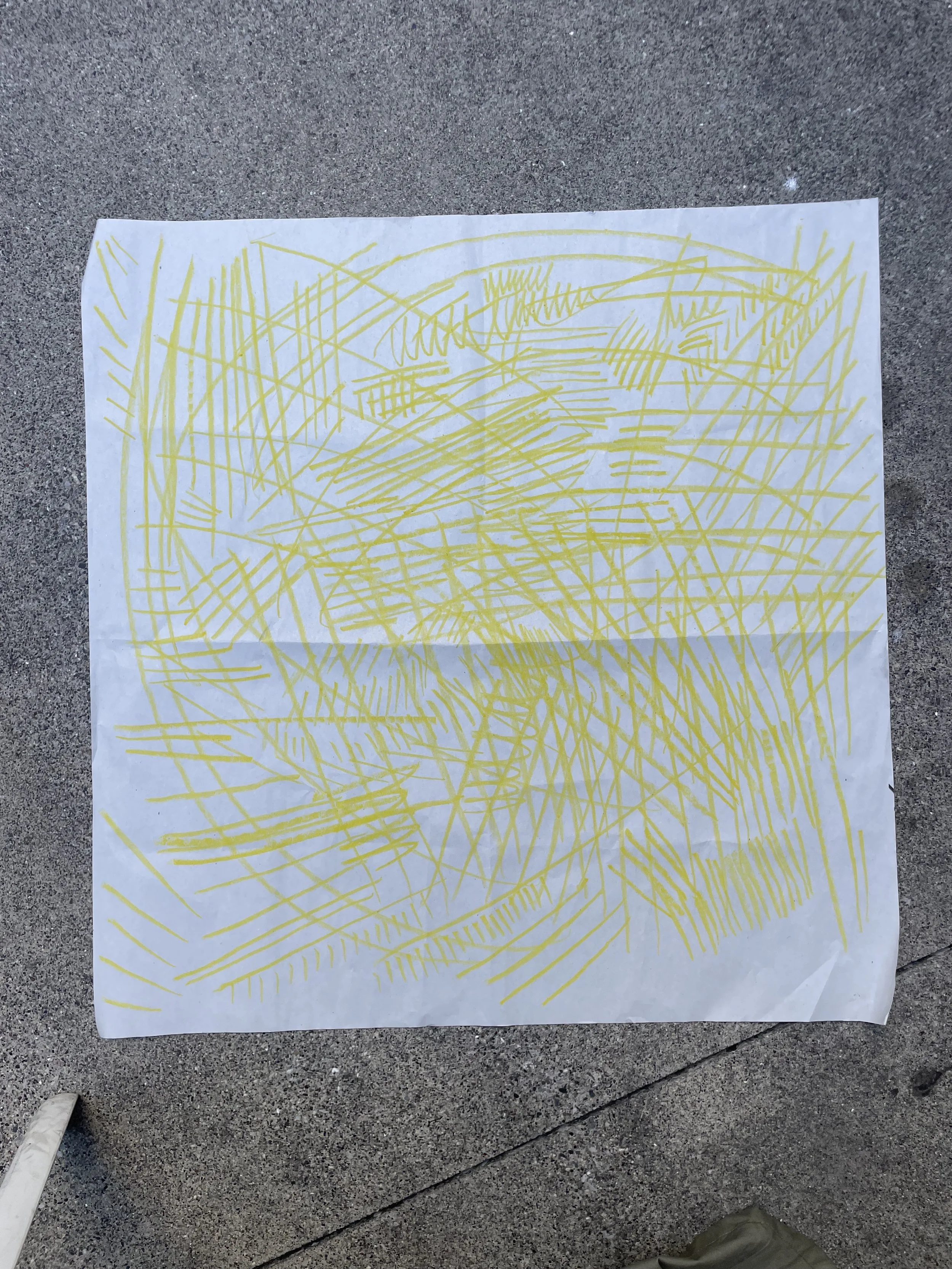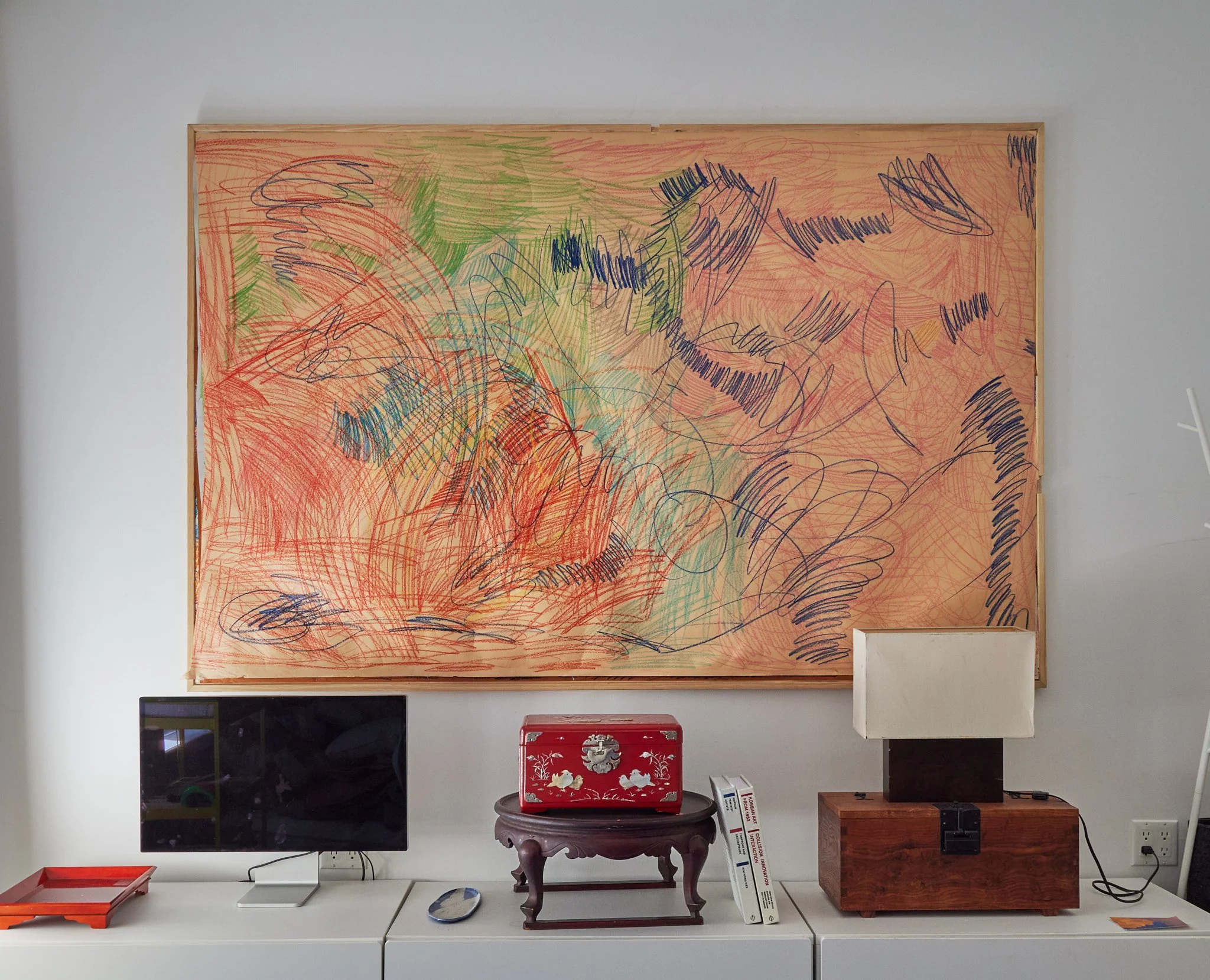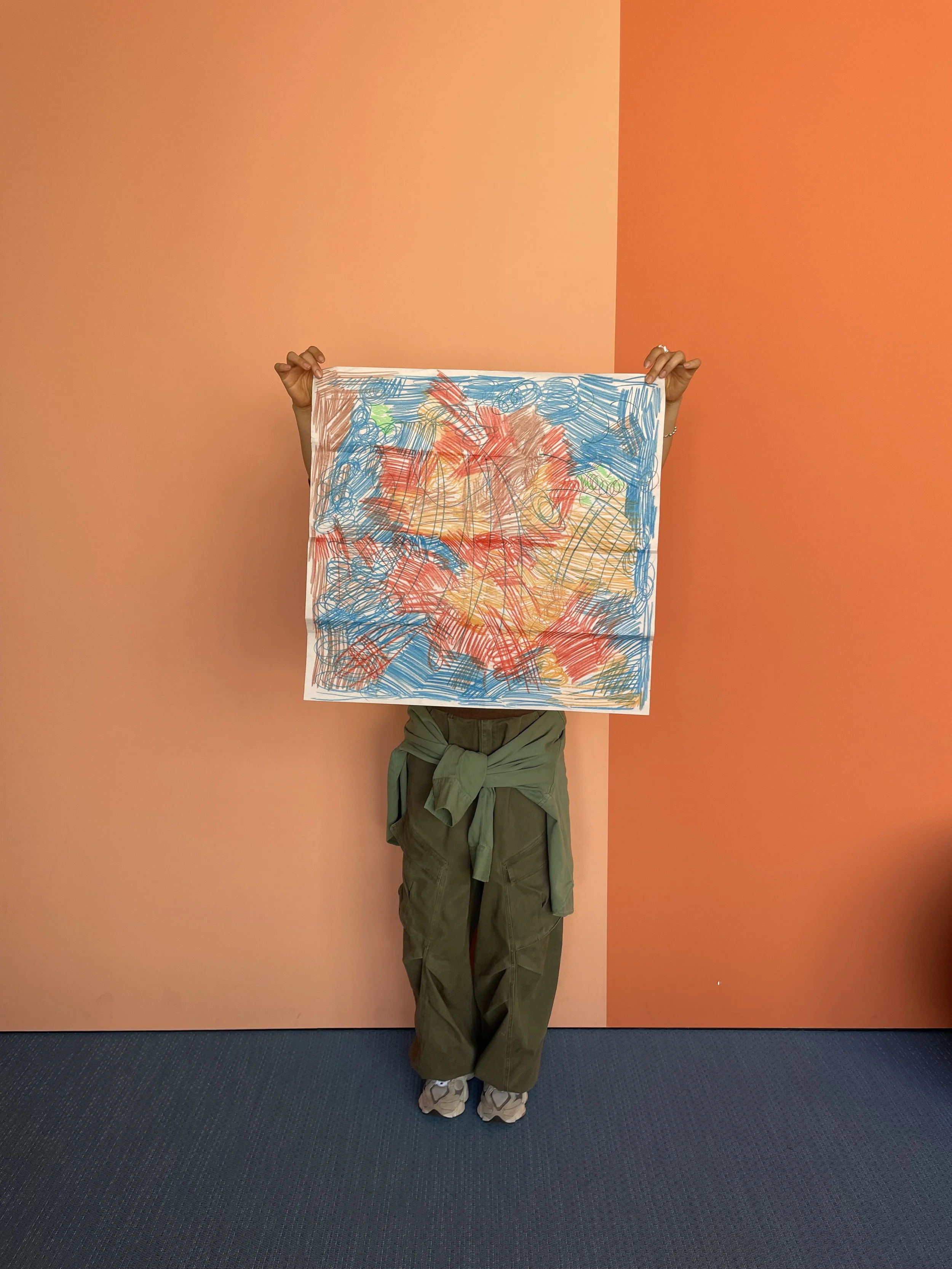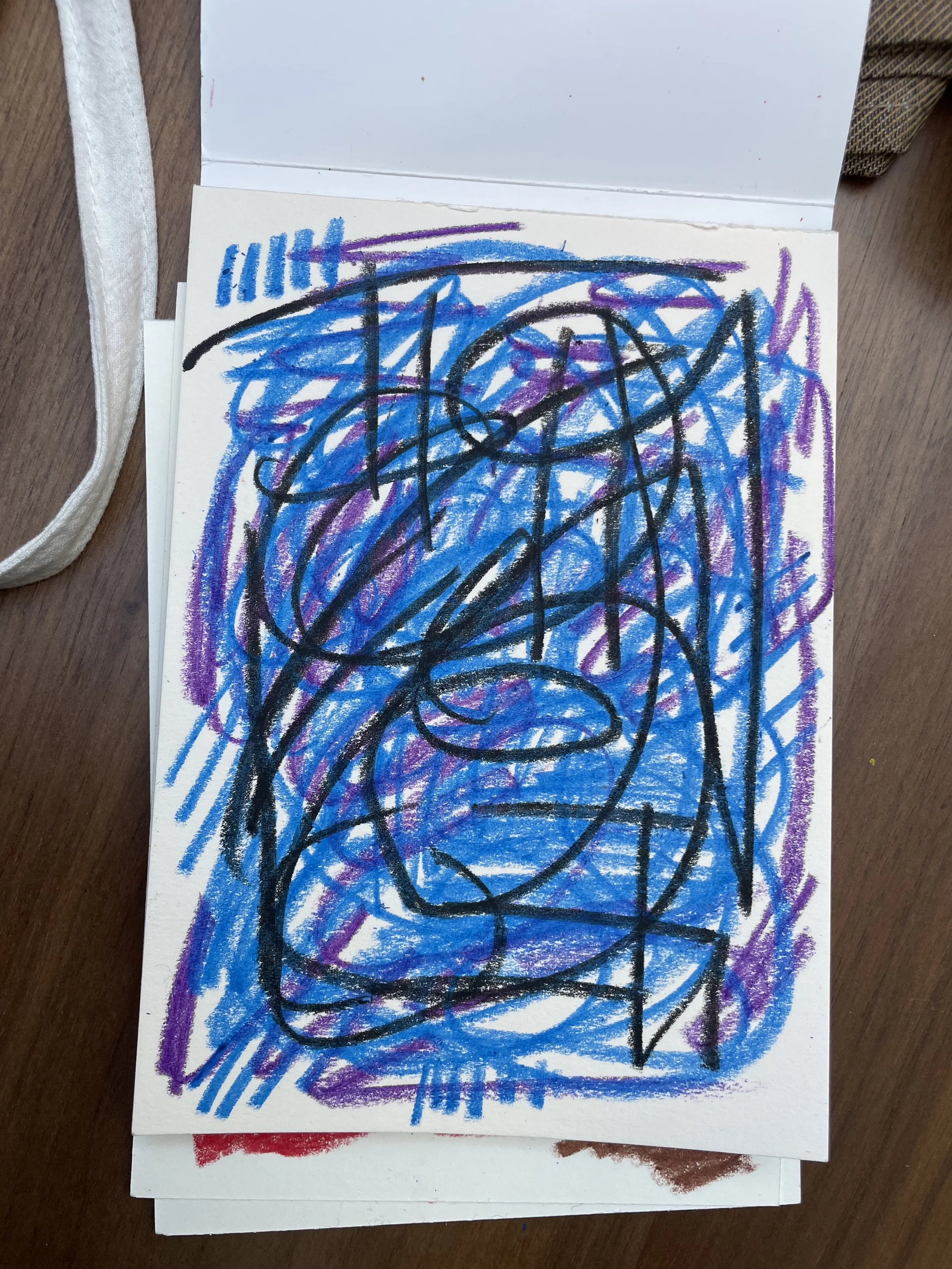Scribble
Scribbles emerge from a state of being untethered—marks that bypass control and drift between accident and intention. They are not simply drawings, but traces of a physical memory, the body remembering what the mind forgets, the hand moving faster than language can catch.
This practice is an act of unlearning and re-learning: undoing habits of perfection, discipline, and clarity, while rediscovering how raw movement can hold meaning. Each line carries the weight of the emotional, psychological, and intellectual—a record of turbulence, release, and return.
In this sense, the scribbles are a portrait of a body in transition. As I move through a new stage in life, they map the shifting terrain of identity and sensation: physical change, dissolving boundaries between past and present selves. The scribble becomes a language of flux, one that resists order yet insists on presence.
I see these works as both rupture and healing: a surface where chaos reorganizes itself, where form dissolves into freedom. The scribbles remind me about listening to what emerges when the body is allowed to speak.

